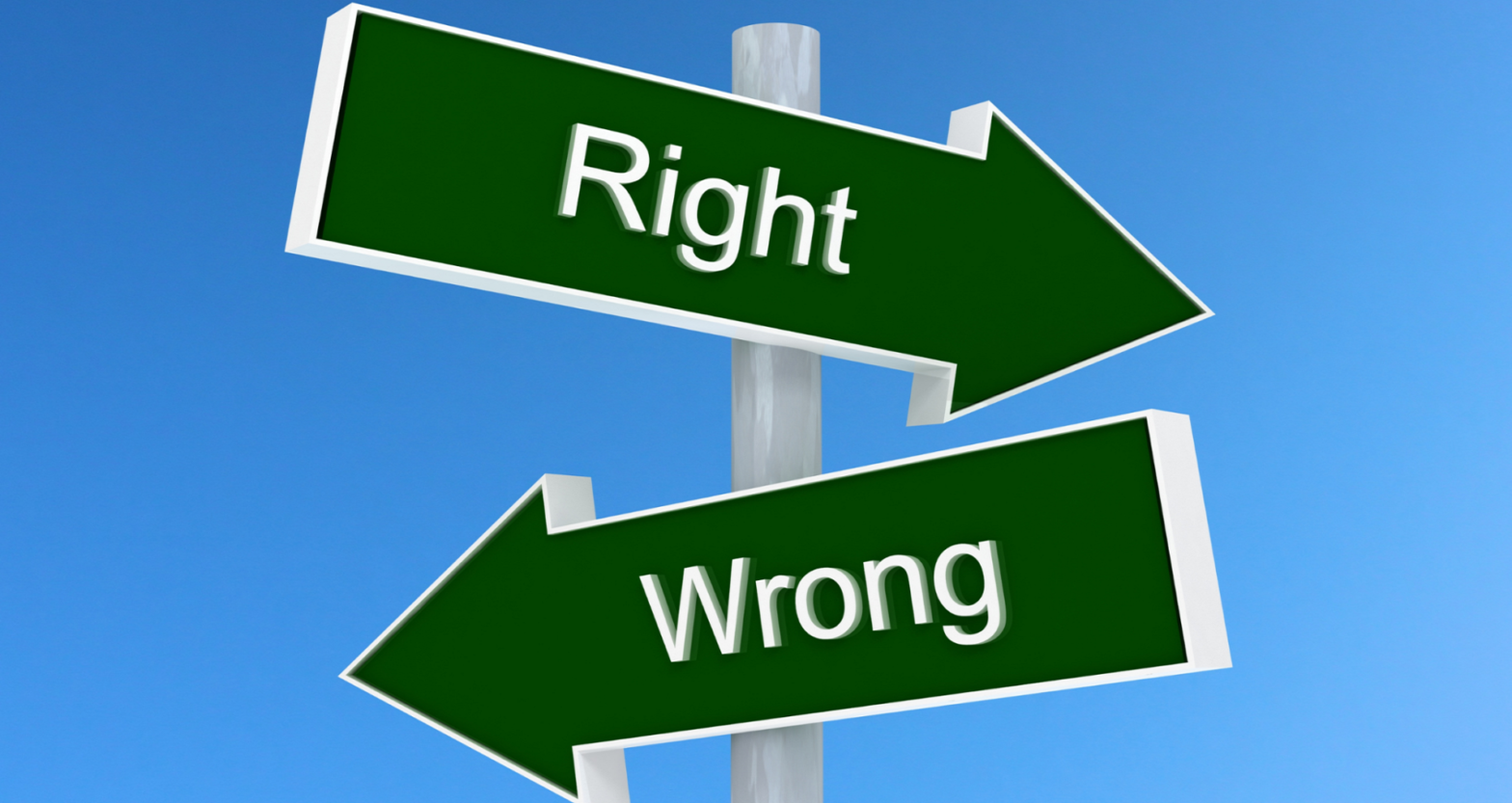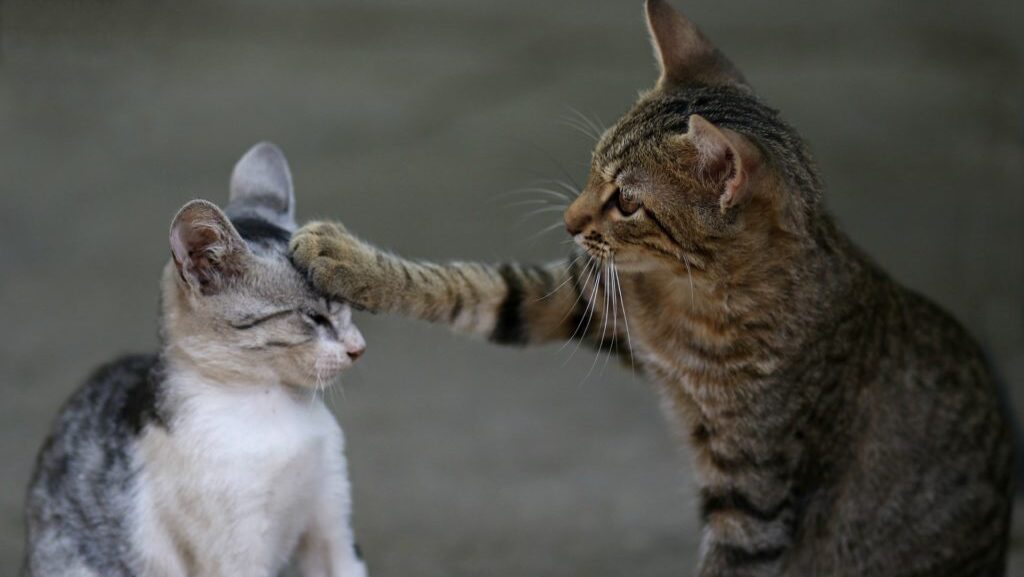In the previous post we looked at how dominant the motif of seeking to be right is in our culture. It is one of the most singular influences on our behavior and our relations. Now we’ll turn our attention to understanding just how this prevailing compulsion to be correct came into being.
The way that we see reality is very influenced by what is known as Aristotelian thinking. Aristotle’s philosophy held that things were or were not, is or is not. This duality very much filters how we picture reality operating. This is known as either/or thinking. It structures our beliefs into a very simple posture. We therefore know of something only by including its opposite.
Interested in bespoke marriage and relationship counseling from Mel Schwartz? Reach out!
The word “hate” wouldn’t have much meaning without the notion of “love.” “Good” wouldn’t make sense without including “bad.” The pairing of opposites helps us to differentiate things and these notions shape the mindscape of our reality. But this also entrains our thinking to look at the opposition and forget that there is an included middle – a place where the opposites coexist – which we’ll get to in just a moment.
This dichotomy of either/or thinking would naturally lead us down the path to either being right or being wrong. Our identity becomes very wed with what we believe to be the truth. Our thoughts work overtime to protect this self-constructed image of our identity. Most people protect their egos by defending the need to be right. In so doing, thought mightily defends its territory. Rigid thought accompanies a fragile sense of self. The more tied we are to being right, the more rigid our beliefs and thoughts. So we begin to see thought defending its territory and doing battle with the possibility of being wrong.
Vulnerability or Strength?
The paradox here is that vulnerability of thought – being comfortable with being wrong – is actually powerful and strong. Once we free ourselves from the need to be right, our thinking and our discourse open up. Not being tied to defending the need to be right opens up wonder, inquiry and a quest for learning. It also provides an exceptional nutrient for our relationships. What I am describing is not vulnerability as we ordinarily think of it, which is feeling at risk or insecure. It’s just the opposite. Not having to be right permits a healthy vulnerability. If I don’t need to be right and am not embarrassed to be wrong, I am in fact far more powerful. I have nothing to fear by what others think and my sense of self isn’t tied to such a silly artifact. In other words, I am liberated by not having to be right. This actually fosters a more powerful self-esteem.
Emerging Sciences
Over the last century the emerging sciences – quantum physics, complexity theory, chaos theory – have revealed a new vista of reality, one in which things are and are not at the same time. As counterintuitive as this may sound, it has been empirically proven time and again. Light exists both as a particle and as a wave simultaneously. The either/or falls apart. Our rational desire to break things down into neat and distinct categories that fit into is or is not falls apart and becomes invalid. The simplicity with which our minds have perceived and participated with reality no longer appears valid. And this simplicity may in fact contribute to many of the difficulties we face in overcoming life’s challenges.
At times, things aren’t so simple. At twilight is it day or night? The confusing answer might be yes. Do you love me or hate me? Might depend upon the moment. The either/or dichotomy falls away. Sometimes things become more complex than the simplicity of either/or thinking. When I teach my Emergent Thinking course, invariably someone asks the question, “Mel, do we discover reality or create reality?” My quizzical response is simply yes. I have retrained my mind not to fall into either/or thinking. I believe that we both discover and create at the same time. One doesn’t preclude the other. Discovery suggests that it lies out there. Create implies that the source is from within. The very demarcation between in here and out there is simply a way in which we’ve been trained to see reality. The new sciences suggest that this duality is simply our way of picturing reality – not how things actually operate. When we transcend the limitations of either/or patterns we begin to see in wholeness.
“Either” and “Or”
Shifting from either/or to either and or enables us to engage complexity and resist the temptation to oversimplify. We can see how stuck things become when rooted in the duality of either/or thinking. For example, do you believe in creative intelligence or do you believe in evolution? This sets up a simple one-sided answer. Is it not possible to believe in both? Does one preclude the other? Not necessarily. Can I be pro choice, yet highly sensitive to the ethical issues of abortion? I’d think so.
In more personal matters, the manner in which we get stuck in the argument reveals a monumental roadblock in generative dialogue and a destructive force in healthy communication and relationships. Refer to my post – The 5% Rule – for more detail on this tendency. Breaking free from either/or and embracing the complexity of and/or tends to validate each party rather than having each reject the other.
Complexity, which includes both opposing parts, permits all opinions and positions to be heard and considered. It does not suggest however, that we’ll remain mired in indecisiveness or clarity. There is a deeper and more authentic simplicity that emerges from complexity. As Oliver Wendell Holmes wrote, “I don’t give a fig for simplicity this side of complexity, but I’d give everything for simplicity on the other side of complexity.” He is suggesting that we resist the black or white thinking that entrenches our positions and embrace the shades of gray, which will ultimately inform our deeper and more informed beliefs. When we do so, we break free from the strait jacket of the right or wrong dilemma.
I’ll be offering a workshop on these topics next month. So, please join the mailing list to be advised of the details.
Follow Mel…
Find Mel on Facebook, Instagram, YouTube and LinkedIn.
Be sure to check out his book: The Possibility Principle.





Fascinating post Mel; very thought-provoking and, for me, reassuring. In my 20s I tended to see grey in every discussion but felt that I ought perhaps to be taking some kind of stand. It’s taken me years to realise that I can live very happily and generatively with my grey.
I’d love some book recommendations around transdisciplinarity.
Thanks.
Sally-Anne
Hi Sally-Anne,
Of course, I should note that people often get paralyzed with indecision in the gray area. So what we seek is a deeper intuitive know that comes from engaging complexity, without falling prey to over analyzing. Complexity is about widening your gaze, rather than hyper-focusing. I’d recommend Basarb Nicolescu ..Manifesto of transdisciplinarity and his other book Theory and Practice.
Thanks Mel. I appreciate your afterthought. Seeing wider perspectives can have its downside of course, like anything which is overplayed.
I’ll look up those books.
Sally-Anne
Great topic… I believe that what prevents chaos when we move away from either/or thinking is one’s ability to sit with the feelings that arise when faced with an either/or scenario… Rather than judging the rightness or wrongness of a situation, we get to sit with our feelings and acknowledge where our beliefs came from and whether or not the beliefs enhance or diminish us. Yes, it’s another framework with parameters, but there are no judgments, just awareness of what we’re experiencing which then enables us to determine our next course of action. We don’t have to judge anyone else for thinking differently, we simply acknowledge that our thinking and therefore our responses are moving in a different direction…
Well put Loren!
Mel, first of all, thank you for your eloquence on the subject. Secondly, I couldn’t help chuckling that the discussion reminded me of that pencil eraser popular a couple of years ago – the one that said “Smart Women Make Changes.” Removing the war-of-the-sexes issue for a second, I believe that fluidity in our judgement can be a good thing, even – as you say – from second to second. It’s not a sign of weakness but of being open to new interpretations. Which brings me to that earlier comment by Katherine about brainstorming. Wouldn’t it, indeed, be a great thing if we encouraged more brainstorming by our clients to get out those “delimiting” and judgemental black/white thoughts. The great thing about blurting out ideas in brainstorming is that everyone expects the cliches (and snap judgements) always to come out first. Only after several refining sessions do you get to The Good Stuff.
Yes, brainstorming is generative, but only after we let go of the filter of fear which limits the activity of the brain. Letting go of what the other person will think, are we being silly, stupid, etc. can open the real brainstorming.
my comment is to address the other side of how freeing,positive and appropriate either/and thinking can be. people look to black and white thinking to silence their anxiety,their fear of what life lies before them. if i can make a decision one way or another about something then it can be resolved,for better or worse,rather than my having to remain in the uncertainity. people tend to reach for black and white thinking because of how painful the gray of reality can be. ” she tries to care for me as best she can but her best is not good enough. they are nice but money is their first proirity. he loves me but i am still alone. i love you but not your behavior. you didn’t mean to hurt me but you did. etc.,etc. if one is often caught in either/and feelings and thinking in relationships and nothing about it feels positive. it is true that freeing ourselves from restrictions and boundaries that do not allow us to see the full reality and potential of life will provide us with tremendous benefit,in the moment it gets lost in the struggle to exist. too many struggle just to exist. too few ever live.
Concerning categorizing things, eg is it this or that, you might want to look at Bart Kosko’s book “Fuzzy Thinking” or posts. He, among others, gives a systematic way of looking at the problem.
Thanks Charles, I’ll take a look